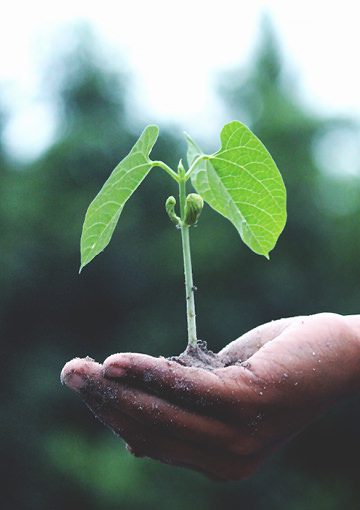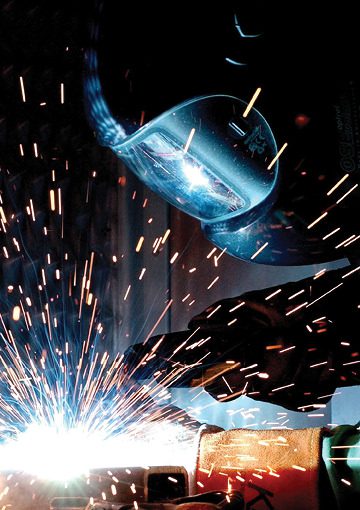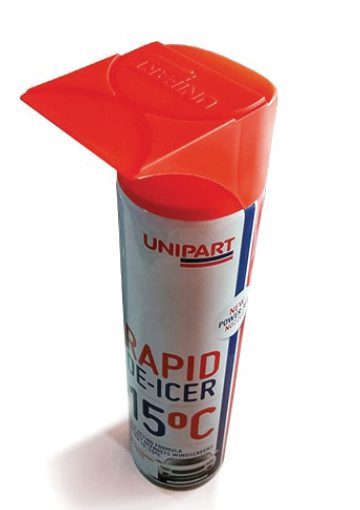Designing a sustainable product
In this case study, we will discuss what to consider when engaging a product design agency to design your product idea sustainably. We will answer the important questions such as: What materials are sustainable? How will my product be made? How will my product reach the end customer?
With increased pressure on retailers to sell ‘green,’ sustainable design is not just a luxury but is essential for business growth.

Sustainable design principles
To make your new product truly sustainable, its entire life cycle must be considered and accounted for; from raw material extraction to end-of-life disposal. With good design thinking and planning, any product can be made 'greener.'
You may be familiar with the ‘5 Rs”
- Refuse
- Reduce
- Recycle
- Reuse
- Repurpose / Rework
These are important guiding principles that help us to question the decisions we make as consumers. As designers and manufacturers, we must apply sustainable processes throughout each design phase.

Does the world need my product?
The first responsibility of a product design agency is to help answer the question ‘does the world need this product?’ A good place to start is by establishing if your product idea solves a problem. It is important in the current climate that we design innovative products that have genuine functionality and that we need.
However, sometimes, although the product idea is innovative and solves a problem, the environmental impacts of its further development cannot be justified. This does not mean the end of the road for you or your invention. It might mean back to the drawing board to consider alternative, non-physical routes and initiatives such as an app.
How do you know if you should take your product idea further? As a design agency that is making steps towards becoming more sustainable, we will always assess a product’s necessity.
What materials are sustainable?
If you have a market for your product and want to engage a product design agency to develop and manufacture it, then you must consider the impacts of the material. How does the material of a product affect its sustainability?
Design is shaped by manufacturing processes, so a late change can be difficult. This is why at Bang Creations, we stay educated about new technologies and materials.
Using recycled and recyclable plastic where possible is a positive shift, however, using biodegradable (or zero) plastic is preferable.
Our recent successes in plastic reduction include prompting our clients to invest in paper pulp packaging rather than polystyrene and making a product out of metal, targeting a higher price point.


How will my product be made?
As we are product design agency that will take your product idea to market, it is important to consider sustainable manufacturing processes.
We know that plastic is not environmentally sustainable, but other processes such as chrome plating and plastic coatings can create dangerous working conditions. It is important to always check with factories and manufacturing partners to ensure they process everything as safely as possible. Last year, Chinese factories had to reapply for licences to perform plating. To be granted a licence, they must now have a 1m raised chemical bed so that any leaks can be seen.
Where possible, Bang Creations will provide more sustainable alternatives to all clients and would not plate the product. Where it is essential, we work exclusively with licensed companies and take every precaution to ensure the safety of workers.
How does a product reach the end customer?
When designing a product, it is important to ask yourself how it will reach the end customer. Do products have to be made in China? How much more will it cost to make a product in the UK? We will help you to answer these questions and will design with packaging and shipping in mind. Considering shipping from an early stage in product development aids sustainability as it could save on shipping unnecessary air, subsequently reducing the number of containers.
As a product design agency, a project which required us to think about shipping throughout the design process was for Unipart. Through countless iterations, we invented a bottle that allowed the caps to nest together and support a layer of cans being placed on top. Both solutions greatly reduced the shipping volume.
What is planned obsolescence?
Many products from the last two decades have been designed to need replacing. But can planned obsolescence be sustainable? Planning for how a product will be disposed of is important for product designers. However, many products from the last two decades have been designed to have artificially short lifespans.
We strive to design quality products that are not designed to break and be disposed of prematurely. If a product can last for a long time, then we will make it robust. If it must have a short life span (e.g. food packaging), we will make it recyclable or biodegradable.

The outcome
As a product design agency that will take your idea to market, we question every design decision. Does the world need this? How can we design this to maximise potential and minimise environmental impact? Where should we make this? And how?
Our clients see this process in every development stage, and we are proud to have been commissioned to design a new generation of electric motorbike and several sustainable alternatives to products which are typically thrown away after a few uses.
Sustainability, to us, is a responsibility and does not warrant a higher price point without superior function. We must create new and innovative solutions where every part serves a function and the user experience is enhanced.

Designing a sustainable product
In this case study, we will discuss what to consider when engaging a product design agency to design your product idea sustainably. We will answer the important questions such as: What materials are sustainable? How will my product be made? How will my product reach the end customer?
With increased pressure on retailers to sell ‘green,’ sustainable design is not just a luxury but is essential for business growth.
Sustainable design principles
To make your new product truly sustainable, its entire life cycle must be considered and accounted for; from raw material extraction to end-of-life disposal. With good design thinking and planning, any product can be made ‘greener.’
You may be familiar with the ‘5 Rs”
- Refuse
- Reduce
- Recycle
- Reuse
- Repurpose / Rework
These are important guiding principles that help us to question the decisions we make as consumers. As designers and manufacturers, we must apply sustainable processes throughout each design phase.
Does the world need my product?
The first responsibility of a product design agency is to help answer the question ‘does the world need this product?’ A good place to start is by establishing if your product idea solves a problem. It is important in the current climate that we design innovative products that have genuine functionality and that we need.
However, sometimes, although the product idea is innovative and solves a problem, the environmental impacts of its further development cannot be justified. This does not mean the end of the road for you or your invention. It might mean back to the drawing board to consider alternative, non-physical routes and initiatives such as an app.
How do you know if you should take your product idea further? As a design agency that is making steps towards becoming more sustainable, we will always assess a product’s necessity.
What materials are sustainable?
If you have a market for your product and want to engage a product design agency to develop and manufacture it, then you must consider the impacts of the material. How does the material of a product affect its sustainability?
Design is shaped by manufacturing processes, so a late change can be difficult. This is why at Bang Creations, we stay educated about new technologies and materials.
Using recycled and recyclable plastic where possible is a positive shift, however, using biodegradable (or zero) plastic is preferable.
Our recent successes in plastic reduction include prompting our clients to invest in paper pulp packaging rather than polystyrene and making a product out of metal, targeting a higher price point.
How will my product be made?
As we are product design agency that will take your product idea to market, it is important to consider sustainable manufacturing processes.
We know that plastic is not environmentally sustainable, but other processes such as chrome plating and plastic coatings can create dangerous working conditions. It is important to always check with factories and manufacturing partners to ensure they process everything as safely as possible. Last year, Chinese factories had to reapply for licences to perform plating. To be granted a licence, they must now have a 1m raised chemical bed so that any leaks can be seen.
Where possible, Bang Creations will provide more sustainable alternatives to all clients and would not plate the product. Where it is essential, we work exclusively with licensed companies and take every precaution to ensure the safety of workers.
How does a product reach the end customer?
When designing a product, it is important to ask yourself how it will reach the end customer. Do products have to be made in China? How much more will it cost to make a product in the UK? We will help you to answer these questions and will design with packaging and shipping in mind. Considering shipping from an early stage in product development aids sustainability as it could save on shipping unnecessary air, subsequently reducing the number of containers.
As a product design agency, a project which required us to think about shipping throughout the design process was for Unipart. Through countless iterations, we invented a bottle that allowed the caps to nest together and support a layer of cans being placed on top. Both solutions greatly reduced the shipping volume.
What is planned obsolescence?
Many products from the last two decades have been designed to need replacing. But can planned obsolescence be sustainable? Planning for how a product will be disposed of is important for product designers. However, many products from the last two decades have been designed to have artificially short lifespans.
We strive to design quality products that are not designed to break and be disposed of prematurely. If a product can last for a long time, then we will make it robust. If it must have a short life span (e.g. food packaging), we will make it recyclable or biodegradable.
The outcome
As a product design agency that will take your idea to market, we question every design decision. Does the world need this? How can we design this to maximise potential and minimise environmental impact? Where should we make this? And how?
Our clients see this process in every development stage, and we are proud to have been commissioned to design a new generation of electric motorbike and several sustainable alternatives to products which are typically thrown away after a few uses.
Sustainability, to us, is a responsibility and does not warrant a higher price point without superior function. We must create new and innovative solutions where every part serves a function and the user experience is enhanced.

Designing a sustainable product
In this case study, we will discuss what to consider when engaging a product design agency to design your product idea sustainably. We will answer the important questions such as: What materials are sustainable? How will my product be made? How will my product reach the end customer?
With increased pressure on retailers to sell ‘green,’ sustainable design is not just a luxury but is essential for business growth.
Sustainable design principles
To make your new product truly sustainable, its entire life cycle must be considered and accounted for; from raw material extraction to end-of-life disposal. With good design thinking and planning, any product can be made ‘greener.’
You may be familiar with the ‘5 Rs”
- Refuse
- Reduce
- Recycle
- Reuse
- Repurpose / Rework
These are important guiding principles that help us to question the decisions we make as consumers. As designers and manufacturers, we must apply sustainable processes throughout each design phase.
Does the world need my product?
The first responsibility of a product design agency is to help answer the question ‘does the world need this product?’ A good place to start is by establishing if your product idea solves a problem. It is important in the current climate that we design innovative products that have genuine functionality and that we need.
However, sometimes, although the product idea is innovative and solves a problem, the environmental impacts of its further development cannot be justified. This does not mean the end of the road for you or your invention. It might mean back to the drawing board to consider alternative, non-physical routes and initiatives such as an app.
How do you know if you should take your product idea further? As a design agency that is making steps towards becoming more sustainable, we will always assess a product’s necessity.
What materials are sustainable?
If you have a market for your product and want to engage a product design agency to develop and manufacture it, then you must consider the impacts of the material. How does the material of a product affect its sustainability?
Design is shaped by manufacturing processes, so a late change can be difficult. This is why at Bang Creations, we stay educated about new technologies and materials.
Using recycled and recyclable plastic where possible is a positive shift, however, using biodegradable (or zero) plastic is preferable.
Our recent successes in plastic reduction include prompting our clients to invest in paper pulp packaging rather than polystyrene and making a product out of metal, targeting a higher price point.
How will my product be made?
As we are product design agency that will take your product idea to market, it is important to consider sustainable manufacturing processes.
We know that plastic is not environmentally sustainable, but other processes such as chrome plating and plastic coatings can create dangerous working conditions. It is important to always check with factories and manufacturing partners to ensure they process everything as safely as possible. Last year, Chinese factories had to reapply for licences to perform plating. To be granted a licence, they must now have a 1m raised chemical bed so that any leaks can be seen.
Where possible, Bang Creations will provide more sustainable alternatives to all clients and would not plate the product. Where it is essential, we work exclusively with licensed companies and take every precaution to ensure the safety of workers.
How does a product reach the end customer?
When designing a product, it is important to ask yourself how it will reach the end customer. Do products have to be made in China? How much more will it cost to make a product in the UK? We will help you to answer these questions and will design with packaging and shipping in mind. Considering shipping from an early stage in product development aids sustainability as it could save on shipping unnecessary air, subsequently reducing the number of containers.
As a product design agency, a project which required us to think about shipping throughout the design process was for Unipart. Through countless iterations, we invented a bottle that allowed the caps to nest together and support a layer of cans being placed on top. Both solutions greatly reduced the shipping volume.
What is planned obsolescence?
Many products from the last two decades have been designed to need replacing. But can planned obsolescence be sustainable? Planning for how a product will be disposed of is important for product designers. However, many products from the last two decades have been designed to have artificially short lifespans.
We strive to design quality products that are not designed to break and be disposed of prematurely. If a product can last for a long time, then we will make it robust. If it must have a short life span (e.g. food packaging), we will make it recyclable or biodegradable.
The outcome
As a product design agency that will take your idea to market, we question every design decision. Does the world need this? How can we design this to maximise potential and minimise environmental impact? Where should we make this? And how?
Our clients see this process in every development stage, and we are proud to have been commissioned to design a new generation of electric motorbike and several sustainable alternatives to products which are typically thrown away after a few uses.
Sustainability, to us, is a responsibility and does not warrant a higher price point without superior function. We must create new and innovative solutions where every part serves a function and the user experience is enhanced.
